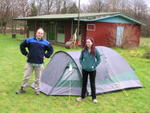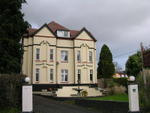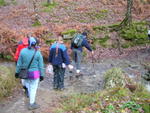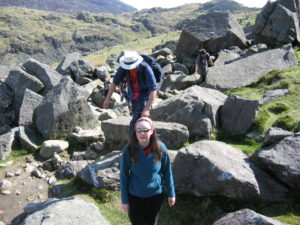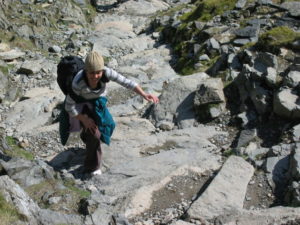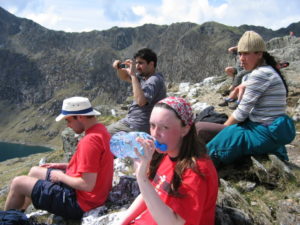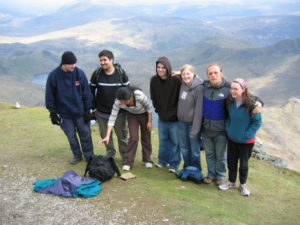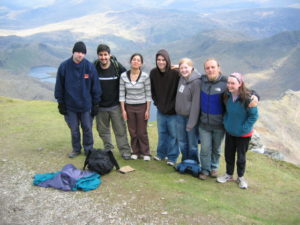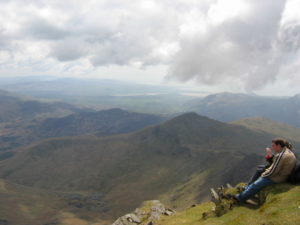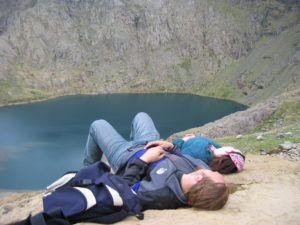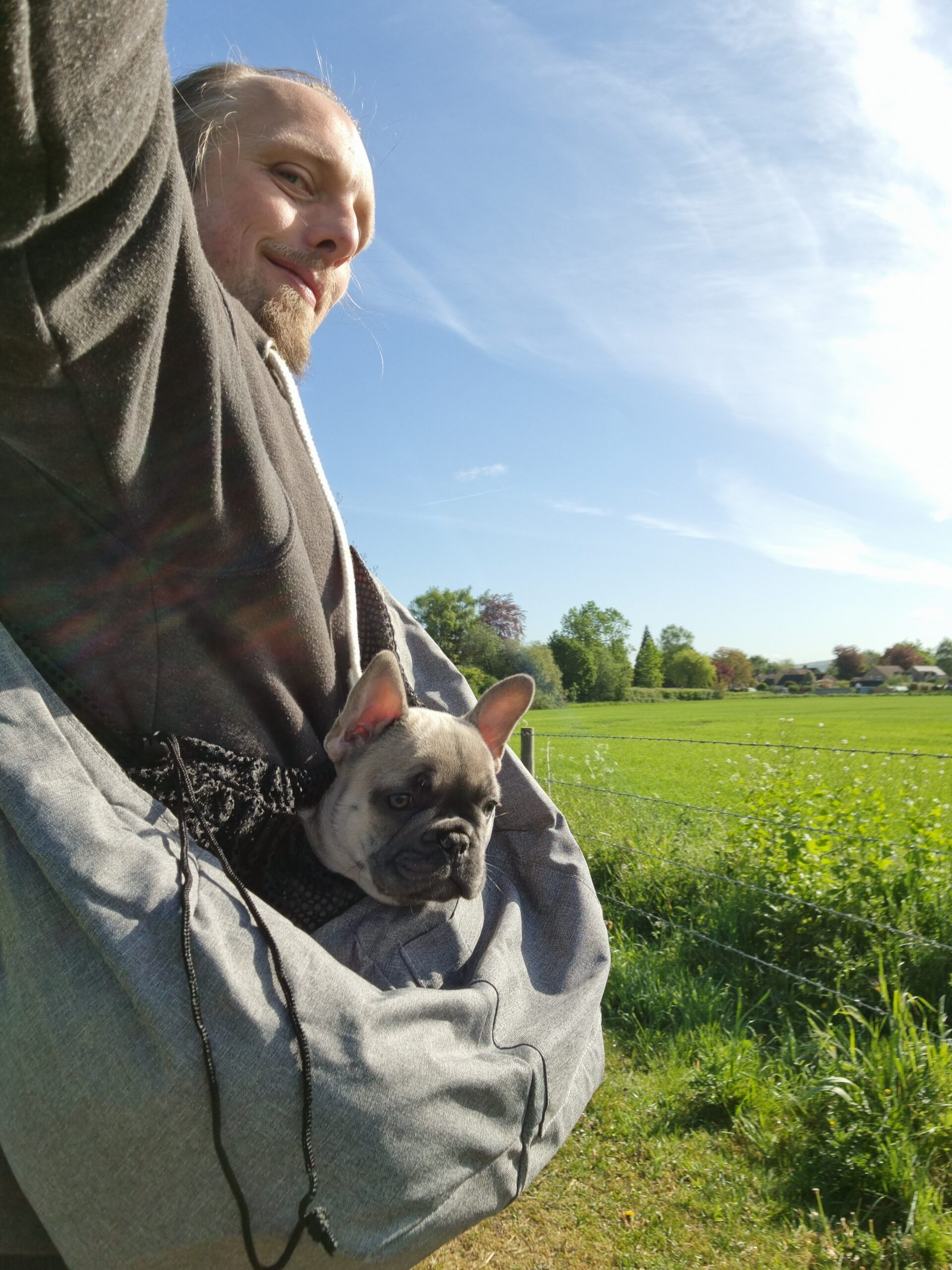
Brought Demmy out on the school run for her first “walk”, this morning.
Tag: walking
Thames Path 2
This article is a repost promoting content originally published elsewhere. See more things Dan's reposted.
…
On our first day‘s walking along the Thames Path, Robin and I had trouble finding any evidence of water for some time. On our second day, we did not have this problem.
After weeks of sustained rain, the fields we walked over as we left Cricklade behind were extremely soggy. On our way out of town we passed Cricklade Millennium Wood, I took a picture for the purpose of mocking it for being very small but later discovered it’s too small to appear on Google Maps and became oddly defensive of it – it’s trying, damn it, we should at least acknowledge its existence.
…
Ruth and her brother Robin (of Challenge Robin/Challenge Robin II fame on this blog, among many other crazy adventures) have taken it upon themselves to walk the entirety of the Thames Path from the source of the river (or rather, one of the many symbolic sources) to the sea, over the course of a series of separate one-day walks. I’ve mostly been acting as backup-driver so far, but I might join them for a leg or two later on.
In any case, Ruth’s used it as a welcome excuse to dust off her blog and write about the experience, and it’s fun and delightful and you should follow along and give her a digital cheer. The first part is here; the second part landed yesterday.
The Search for England’s Forgotten Footpaths
This article is a repost promoting content originally published elsewhere. See more things Dan's reposted.
Nineteen years ago, the British government passed one of its periodic laws to manage how people move through the countryside. The Countryside and Rights of Way Act created a new “right to roam” on common land, opening up three million acres of mountains and moor, heath and down, to cyclists, climbers, and dog walkers. It also set an ambitious goal: to record every public path crisscrossing England and Wales by January 1, 2026. The British Isles have been walked for a long time. They have been mapped, and mapped again, for centuries. But that does not mean that everything adds up, or makes sense. Between them, England and Wales have around a hundred and forty thousand miles of footpaths, of which around ten per cent are impassable at any time, with another ten thousand miles that are thought to have dropped off maps or otherwise misplaced. Finding them all again is like reconstructing the roots of a tree. In 2004, a government project, named Discovering Lost Ways, was given a fifteen-million-pound budget to solve the problem. It ended four years later, overwhelmed. “Lost Footpaths to Stay Lost,” the Daily Telegraph reported. Since then, despite the apparent impossibility of the task, the 2026 cutoff has remained on the statute books, leaving the job of finding and logging the nation’s forgotten paths to walkers, horse people, and other obsessives who can’t abide the muddled situation.
A couple of days into the New Year, with the deadline now only seven years off, I met Bob Fraser, a retired highway engineer, in a parking lot a few miles outside Truro, in Cornwall, in the far west of England. Fraser grew up in Cornwall and returned about thirty years ago, which is when he noticed that many footpaths were inaccessible or ended for no reason. “I suppose that got me interested in trying to get the problem sorted out,” he said. Since he retired, seven years ago, Fraser has been researching and walking more or less full time; in the past three years, he has applied to reinstate sixteen lost paths.
…
Note #12728
Devon – the trip we’ll never forget
Our holiday in Devon last week turned out to be… memorable… both for happy holiday reasons and for somewhat more-tragic ones. Selected features of the trip included:
Croyde
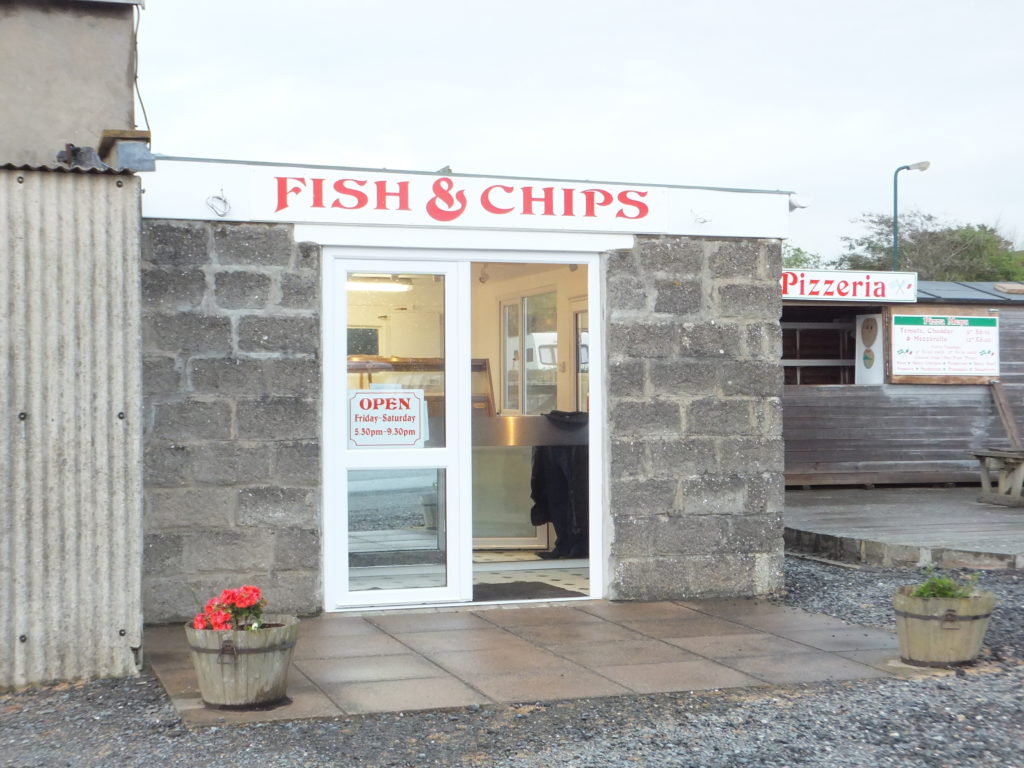
We spent most of the week in Croyde, a picturesque and tourist-centric village on Devon’s North coast. The combination of the life of a small village and being at the centre of a surfer scene makes for a particularly eccentric and culturally-unusual place. Quirky features of the village included the bakery, which seemed to only bake a half-dozen croissants each morning and sell out shortly after they opened (which was variably between 8am and 9am, pretty much at random), the ice cream shop which closed at lunchtime on the hottest day of our stay, and the fish & chip shop that was so desperate to “use up their stock”, for some reason, that they suggested that we might like a cardboard box rather than a carrier bag in which to take away our food, “so they could get rid of it”.
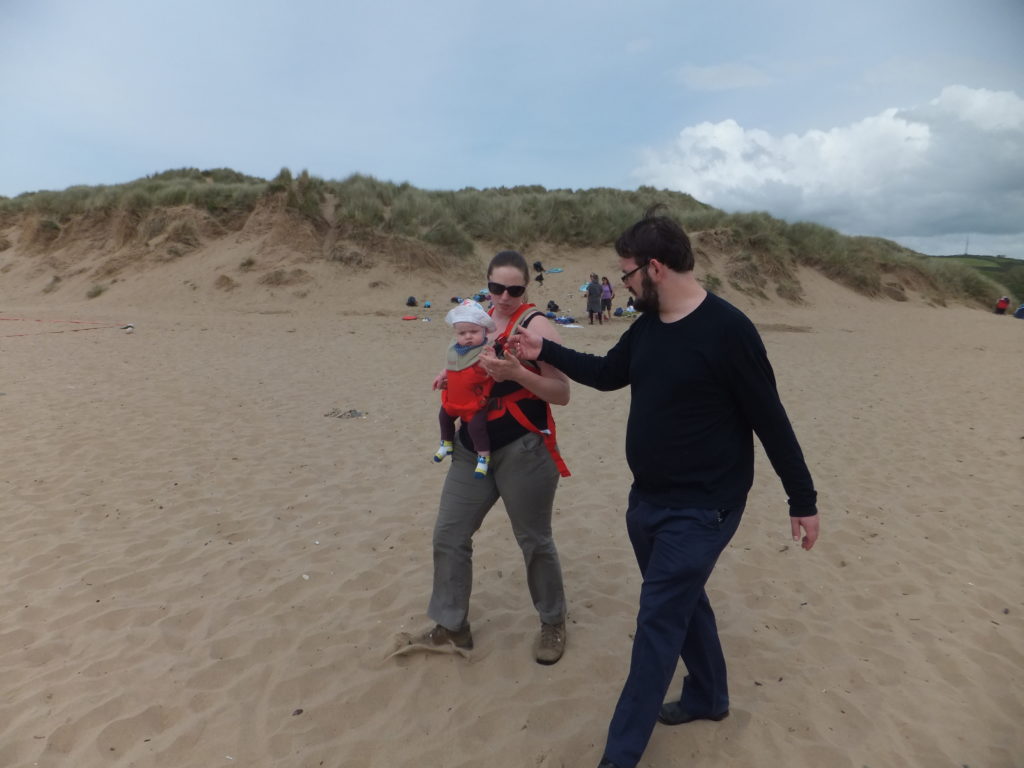
The Eden Project

Ever since it opened in the early 2000s, I’d always wanted to visit The Eden Project – a group of biome domes deep in the valley of a former Cornish quarry, surrounded by gardens and eco-exhibitions and stuff. And since we’d come all of the way to Devon (via Cardiff, which turns out to be quite the diversion, actually!), we figured that we might as well go the extra 90 miles into Cornwall to visit the place. It was pretty fabulous, actually, although the heat and humidity of the jungle biome really did make it feel like we were trekking through the jungle, from time to time.
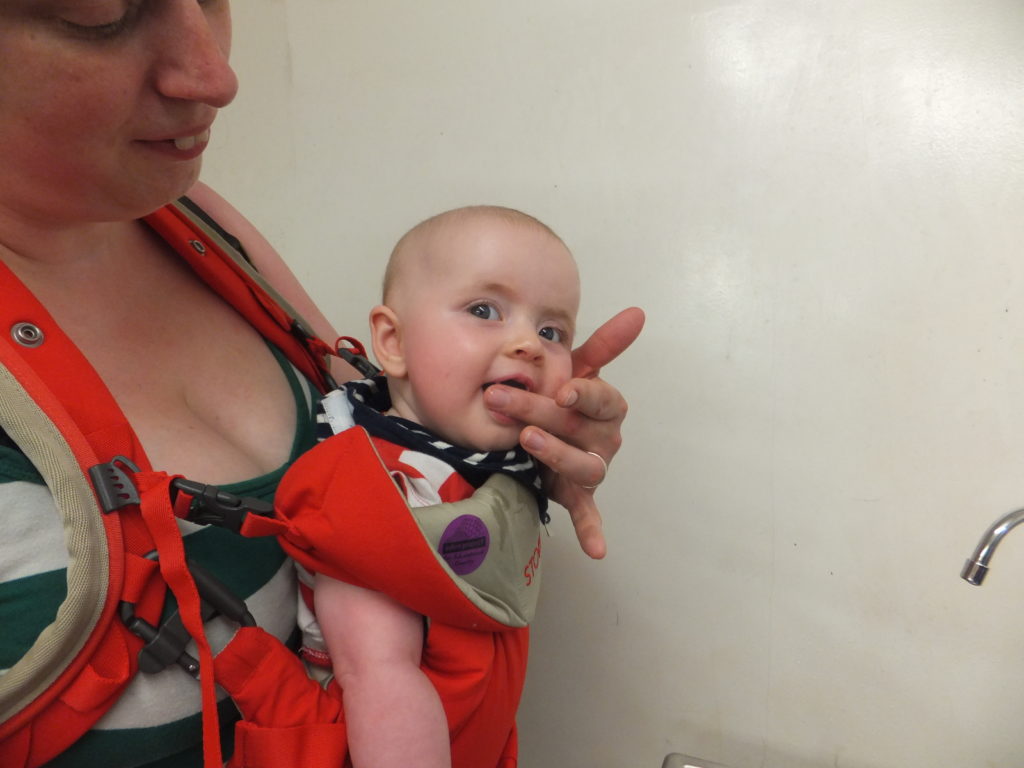
Geocaching

On one day of our holiday, I took an afternoon to make a 6½ mile hike/jog around the Northern loop of the Way Down West series of geocaches, which turned out to be somewhat gruelling on account of the ill-maintained rural footpaths of North Devon and taking an inadequate supply of water for the heat of the afternoon.
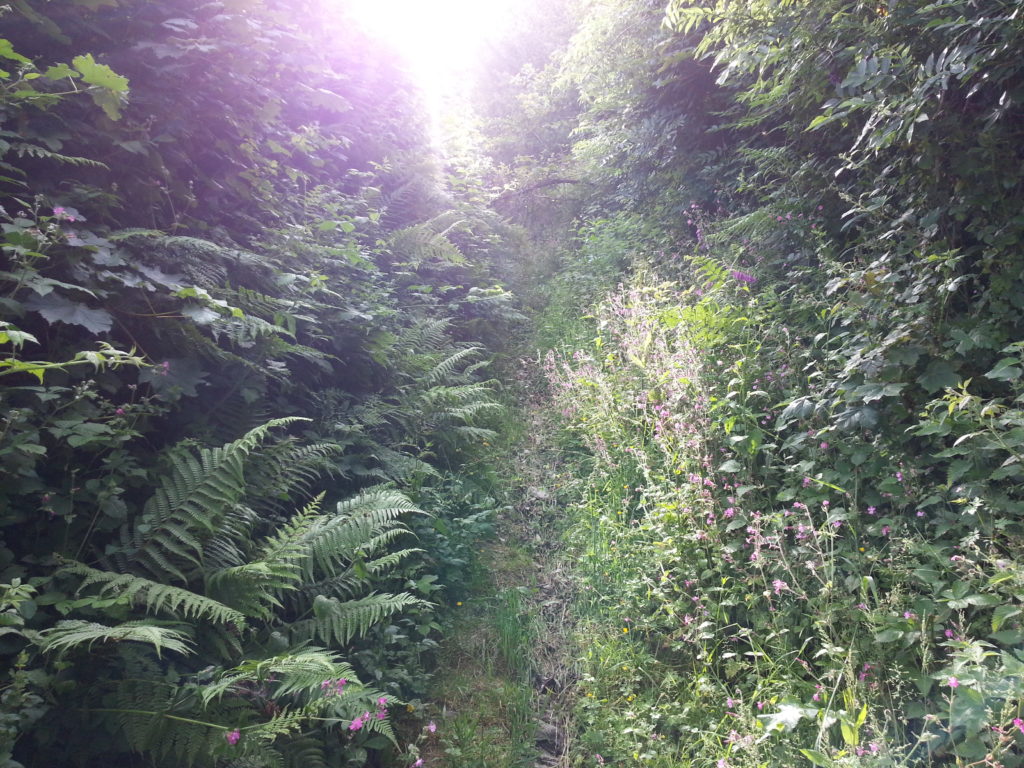
On the upside, though, I managed to find 55 geocaches in a single afternoon, on foot, which is more than three times my previous best “daily score”, and took me through some genuinely beautiful and remote Devon countryside.

Watermouth Castle
We took an expedition out to Watermouth Castle, which turned out to be an experience as eccentric as we’d found Croyde to be, before it. The only possible explanation I can think of for the place is that it must be owned by a child of a hoarder, who inherited an enormous collection of random crap and needed to find a way to make money out of it… so they turned it into something that’s 50% museum, 50% theme park, and 100% fever dream.

There’s a cellar full of old bicycles. A room full of old kitchen equipment. A room containing a very large N-gauge model railway layout. Several rooms containing entertainments that would have looked outdated on a 1970s pier: fortune tellers, slot machines, and delightfully naïve peep-show boxes. A hedge maze with no exit. A disturbingly patriotic water show with organ accompaniment. A garden full of dancing gnomes. A hall of mirrors. A mock 1920s living room. A room full of primitive washing machines and their components. The whole thing feels schizophrenic, but somehow charming too: like a reminder of how far entertainment and conveniences have come in the last hundred years.
Baggy Point

We took a hike out to beautiful Baggy Point, a beautiful headland stretching out into the Atlantic to make it the Easternmost point in North Devon. It was apparently used by soldiers training for the D-Day landings, but nowadays it seems mostly to be used to graze goats. The whole area made me reminisce about walks to Borth along the Ceredigion coast. Unfortunately for Ruth and JTA, who headed back to our accommodation before me, I’d failed to hand them the key to the front door before we parted ways and I went off to explore the rest of the headland, and in my absence they had to climb in through the window.
The Collision
For all of the wonderful things we got up to in Devon, though – everything above and more besides – the reason that we’ll no-doubt never forget this particular trip came as we set off on our way home.
[spb_message color=”alert-warning” width=”1/1″ el_position=”first last”]Warning: this section discusses a tragic car accident.[/spb_message]
About an hour after we set off for home on our final day in Devon, we ended up immediately behind a terrible crash, involving two cars striking one another head-on at an incredible speed. We saw it coming with only seconds to spare before both vehicles smashing together, each thrown clear to a side of the road as a cloud of shattered glass and metal was flung into the air. JTA was driving at this point, and hit the brakes in time to keep us clear of the whirling machines, but it was immediately apparent that we were right in the middle of something awful. I shouted for Ruth and JTA to see what they could do (they’re both Red Cross first aiders, after all) as I phoned the emergency services and extracted our location from the SatNav, then started working to ensure that a path was cleared through the traffic so that the ambulances would be able to get through.

A passer-by – an off-duty police officer – joined Ruth and I in performing CPR on one of the drivers, until paramedics arrived. My first aid training’s rusty compared to Ruth and JTA’s, of course, but even thinking back to my training so long ago, I can tell you is that doing it with a real person – surrounded by glass and oil and blood – is a completely different experience to doing it on a dummy. The ambulance crew took over as soon as they arrived, but it seems that it was too late for her. Meanwhile the driver of the other car, who was still conscious and was being supported by JTA, hung on bravely but, local news reported, died that afternoon in hospital. Between the two cars, two people were killed; the third person – a passenger – survived, as did a dog who was riding in the back of one of the cars.
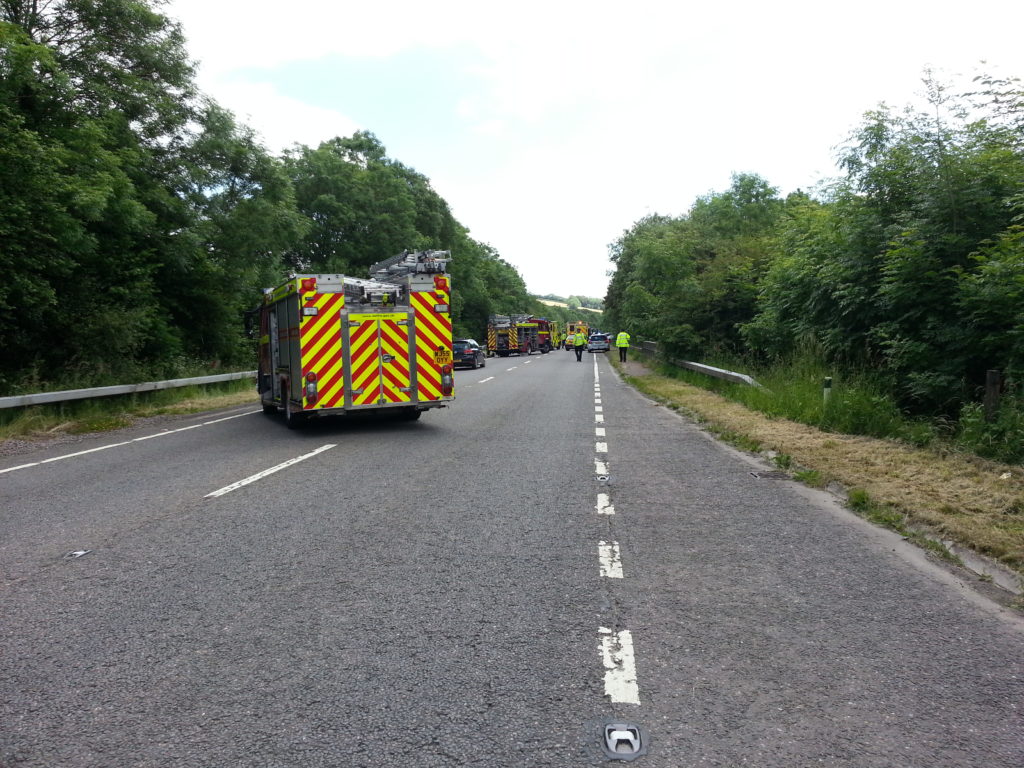
I am aware that I’ve described the incident, and our participation in its aftermath, in a very matter-of-fact way. That’s because I’m honestly not sure what I mean to say, beyond that. It’s something that’s shaken me – the accident was, as far as I could see, the kind of thing that could happen to any of us at any time, and that realisation forces upon me an incredible sense of my own fragility. Scenes from the experience – the cars shattering apart; the dying driver; her courageous passenger – haunt me. But it feels unfair to dwell on such things: no matter what I feel, there’s no way to ignore the stark truth that no matter how much we were affected by the incident… the passenger, and the families and friends of those involved, will always have been affected more.
It took hours for us to get back on the road again, and the police were very apologetic. But honestly: I don’t think that any of us felt 100% happy about being behind the wheel of a car again after what had just happened. Our journey back home was slow and cautious, filled with the images of the injuries we’d seen and with a newly acute awareness of the dangers of the glass-and-metal box we sat inside. We stopped at a service station part-way home, and I remarked to Ruth how surreal it felt that everybody around us was behaving so normally: drinking a coffee; reading a paper; oblivious to the fact that just a few tens of miles and a couple of hours away, people just like them had lost their lives, doing exactly what they were about to go and do.
It’s all about perspective, of course. I feel a deep sorrow for the poor families of the people who didn’t make it. I feel a periodic pang of worry that perhaps there were things I could have done: What if I’d have more-recently practised first aid? What if I’d more-quickly decoded our position and relayed it to the operator? What if I’d have offered to help Ruth immediately, rather than assuming that she had sufficient (and the right kind of) help and instead worked on ensuring that the traffic was directed? I know that there’s no sense in such what-if games: they’re just a slow way to drive yourself mad.
Maybe I’m just looking for a silver lining or a moral or something in this story that I just can’t find. For a time I considered putting this segment into a separate blog post: but I realised that the only reason I was doing so was to avoid talking about it. And as I’m sure you all know already, that’s not a healthy approach.
Right now, I can only say one thing for certain: our holiday to Devon is a trip I’ll never forget.
Abnib Real Ale Ramble 2006
In case you hadn’t guessed, the destroyed tent I posted a picture of to my blog a few days ago wasn’t Jimmy‘s at all, but another tent we saw while on the Abnib Real Ale Ramble. Jimmy has since gotten his revenge by ensuring I play Medieval II: Total War, which has occupied most of my life since we got back. Pictures from the entire weekend, mostly taken on JTA‘s (borrowed) camera, which had a habit of turning itself off without warning, are available on Abnib Gallery.
In the end, it was only Ruth, JTA, Claire and I that went to Llanwrtyd Wells for the Real Ale Ramble this year. Claire and I borrowed Jimmy’s tent and camped on the local rugby pitch, where the toilet/shower block (which doubles as the local scout troop hut) was unlocked for us. Of the three nights we camped, there were only other people camping there on one night: three tents appeared a little way from ours during our first day’s rambling, and disappeared again the following morning. The temperature was tolerable, given our heavy-duty sleeping bags, but the torrential hailstorms made camping a more exciting experience than we had anticipated, and it almost became necessary to re-peg the tent during one of the more violent storms.
Ruth & JTA, meanwhile, set themselves up at Ardwyn House, a B&B near the self-catering cottage in which we stayed last year. I’ll leave it to them to describe the comparative life of luxury they were allowed to live there. Still; it must be said that our campsite had a higher showers-to-guest ratio than them, so perhaps we win after all. On our final night, after returning from the pub, we all had a great and very tense game of Illuminati in the library (yes, their B&B had a library) and drank champagne to celebrate Ruth & JTA having been together for approximately three years. Again, suppose that’s more something for them to blog about.
We did the 15-mile ramble on the first day, which remains, like last year, about twice as hard or more as the 10-mile walk (which we did on the second), even without a broken foot. The pouring rain of the previous few days – accompanied by scattered showers on the first day – resulted in very wet conditions, and at times the mudslides made it difficult to stay in the same place, never mind making progress up an embankment. On several humorous occasions one or another of us would lose our balance and hurtle down into the mud, but we were prepared for this with waterproof or semi-waterproof clothing pretty-much all round. The number of “beer tokens”, each worth half a pint of beer (also exchangeable for hot and cold drinks and, sometimes, soup) was reduced this year to three per day, but the enforcement had been relaxed, and on the second day I recall that Ruth drank three pints of Cambrian Ale without handing over a single token while we sat at a picnic bench by a river.
The evenings took us, predictably, to the Neuadd Arms, for a great number of interesting beers (Over The Edge, Red Dragon, Cambrian Ale, Russian Stoat, and a few others come to mind as being well-worth-tasting) – and some equally interesting conversation with strange and unusual people: we met a man who’s life was taken over by bonsai trees, a woman who graduated in Biology from Aberystwyth in 1985, and a lecturer who’d “disappeared” from his classes to come along to the festival, among others – but also, this year, to the Stonecroft Inn, where, in a gazebo out the back of the pub, they had a fabulous selection of ales, ciders and perries to try, as well as a flamethrower-like space heater that felt wonderful to stand in front of after a wet day in the hills.
Norman, the 70-something old man who beat us around both walks last year, was around again, and still managed to get around the walk faster than us, although we might have beaten him on the second day were it not for the abandoned beer tent at Station 1 and, therefore, the temptation to hang around for a second drink before hitting the trail again. He is, as I put it at the time, “a one-man walking machine,” before I realised how stupid that sounded. A few other familiar faces were to be seen, too: folks we’d seen last year giving knowing nods as if to say, “Ah, it’s you again.” Although, more often, they were saying things like “You’re camping? In this?”
One final highlight of the weekend that I’ll share with you is of a meal at the Neuadd Arms. On their menu they list a number of curry dishes, all rated by heat with a series of “radiation” symbols by each, from one to three. Except for their Phaal, which has five, and promises a medal to anybody who can clear their plate. Claire, being Claire, tried it. She didn’t manage to clear her plate, but that’s probably for the best, because the room was starting to feel warm and tingly as a result of the heat exuded by the dish. We all tried a taste of it, once she’d admitted defeat, which was quite painful – but tasty. Claire’s promised to get herself into “curry training” for next year.
Right; time to start planning the Abnib Real Ale Ramble 2007!
Further Reading
- Ruth writes happy things about her and JTA surviving three years
- JTA composes a belated post summarising his favourite points
Sundeep’s Birthday and Snowdon
Sundeep had decided that we were to celebrate her birthday by climbing Snowdon, so that’s what we did. My legs are sore now, not least because I thought it would be wise to jog most of the way back down again.
Here’s the piccies. As before, if you read this on my blog rather than on
Abnib or in your RSS reader or whatever then clicking on the pictures will start a slideshow-like pop-up thingy that’s ever so cool.
More pictures are available in the Abnib Gallery: Sundeep’s 21st & Snowdon Trip.
Llanwrtyd Wells Real Ale Ramble
What’s everybody doing on the third weekend in November? If I could find reasonabley-priced accomodation (everybody likes camping, right <wink>), who’d be up for the Llanwrtyd Wells Real Ale Ramble – two days of trekking over hills and being fed real ale at various points along the way?
From the web site:
The Real Ale Ramble is held annually in conjunction with the Mid Wales Beer Festival. All the walks begin from the centre of Llanwrtyd Wells, the smallest town in Britain. This is an area where the pace of life is relaxed and traditional, where the inhabitants are friendly and welcome visitors who come to enjoy the unsurpassed scenery of this little known part of Mid Wales.
The Real Ale Rambles are non competitive, the entry fee for 2004 [think they mean 2005 – they say 2005 everywhere else, and the information seems to still be accurate] is £16 per person which covers 2 days (booking by the day will cost £15 per day) and there are choices of 10, 15 or 25 miles daily. All routes are waymarked, and a refreshing glass of Real Ale will be free to all registered participants at the various checkpoints en-route. All walks take place off road, so you can enjoy the beauty of the landscape, forest, moor and mountain in this spectacularly beautiful area of Mid Wales. Those who finish their chosen walk can purchase a medal or badge and track suit badges will also be on sale.
I’ll get an information pack on it’s way to The Flat. And before you ask, Llanwrtyd Wells is less than 2 hours drive away.

